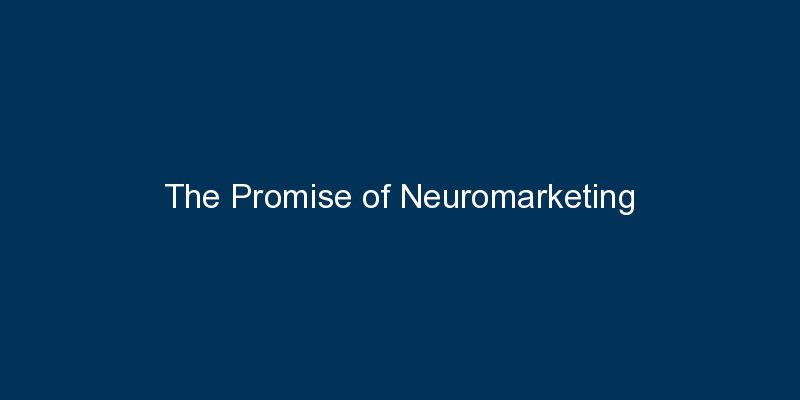In the dynamic landscape of marketing, understanding consumer behavior is the key to success. Enter neuromarketing, a field that blends neuroscience with marketing strategies to delve into the intricacies of consumer decision-making. This blog explores the promise of neuromarketing, shedding light on how it is revolutionizing the way businesses connect with their audiences.
Decoding the Brain’s Response to Marketing Stimuli
Neuroscience in Marketing
Neuromarketing involves the application of neuroscience techniques to analyze and understand how the human brain responds to various marketing stimuli. Traditional market research often relies on self-reporting, which may not always provide accurate insights. Neuromarketing, on the other hand, taps into the subconscious mind, offering a more authentic understanding of consumer preferences and reactions.
Emotional Engagement
One of the promises of neuromarketing lies in its ability to measure emotional engagement. By monitoring brain activity, researchers can identify emotional responses triggered by marketing materials. This insight is invaluable for marketers aiming to create content that resonates emotionally with their target audience, fostering stronger connections and brand loyalty.
The Tools of Neuromarketing
Functional Magnetic Resonance Imaging (fMRI)
fMRI is a powerful tool in neuromarketing, allowing researchers to visualize and analyze brain activity in response to marketing stimuli. This technology provides detailed insights into the areas of the brain associated with emotions, memory, and decision-making. Marketers can use this information to refine their strategies and create content that elicits positive responses.
Eye-Tracking Technology
Eye-tracking technology is another tool in the neuromarketing arsenal. By monitoring eye movements, researchers can understand where individuals focus their attention when exposed to marketing materials. This information helps optimize the placement of key elements in advertisements, websites, and product packaging to capture and maintain consumer attention.
Understanding Consumer Preferences and Decision-Making
Subconscious Decision Influences
Neuromarketing unveils the subconscious factors that influence consumer decisions. Through brain scans and physiological measurements, researchers can identify the neural pathways associated with preferences and choices. This understanding enables marketers to craft messages and designs that align with consumers’ subconscious desires, increasing the likelihood of a positive response.
Neurological Impact of Branding
Branding plays a crucial role in consumer perceptions, and neuromarketing sheds light on its neurological impact. By studying brain responses to logos, colors, and brand elements, marketers can refine branding strategies to create a more memorable and positive impression on consumers.
Enhancing User Experience and Product Design
Neuro-Web Design
Neuromarketing extends its influence to web design through neuro-web design principles. Understanding how the brain processes information allows designers to create websites that are visually appealing, easy to navigate, and optimized for user experience. This results in increased engagement and a higher likelihood of conversion.
Product Packaging Optimization
The impact of product packaging on consumer choices is profound, and neuromarketing assists in optimizing packaging designs. By analyzing brain responses to different packaging elements, marketers can create packaging that not only attracts attention on the shelves but also stimulates positive associations in the minds of consumers.
Challenges and Ethical Considerations
While the promise of neuromarketing is evident, it is essential to acknowledge the challenges and ethical considerations associated with this field. Privacy concerns regarding the collection of neurological data and the potential manipulation of consumer behavior raise important questions that need careful consideration as neuromarketing continues to evolve.
Conclusion
In conclusion, the promise of neuromarketing lies in its ability to decode the intricacies of consumer behavior at a neurological level. By tapping into the subconscious mind, marketers can gain authentic insights into preferences, emotional responses, and decision-making processes. The tools of neuromarketing, from fMRI to eye-tracking technology, empower businesses to optimize their strategies, enhance user experiences, and create more impactful marketing campaigns.
As neuromarketing continues to advance, it is crucial for businesses to approach this field ethically, respecting consumer privacy and maintaining transparency. The promise of neuromarketing is not just about influencing consumer behavior but also about creating more meaningful connections between brands and their audiences, ultimately leading to a more authentic and mutually beneficial relationship.



















Comments